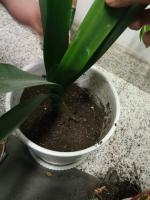Which Adaptation is Shown by Water Lily Plant
Water lilies are beautiful fresh-water plants that are commonly found in ponds, lakes, and slow-flowing rivers. These plants have unique adaptations that allow them to thrive in their aquatic habitats. The following is an overview of the main adaptations that are displayed by water lily plants.
Adaptations for Life in Water
One of the primary adaptations of water lily plants is the ability to live in water. The plant has evolved to absorb nutrients, water, and gases through its leaves and roots, which are submerged in water. The leaves, which are large and circular, are designed to float on the water's surface, allowing them to capture sunlight and maximize photosynthesis, which is the process by which the plant produces its own food.
Another adaptation of water lily plants is their ability to grow in shallow water. They are well-suited to grow in areas where other plants cannot, as they are able to thrive in water that is only a few inches deep. Their roots are also designed to anchor firmly to the muddy bottom of the pond or river, which helps to keep them in place and unaffected by currents or wind.
Adaptations for Pollination and Reproduction
The water lily plant has evolved specific adaptations that enable it to reproduce successfully in its aquatic environment. One of these adaptations is the large, showy flowers that the plant produces. The flowers are brightly colored and emit a strong scent that attracts a wide variety of pollinators, such as bees, butterflies, and beetles, which help to transfer the pollen from one plant to another.
In addition, the water lily plant has evolved to stagger the timing of its flowering with the seasons. This is an important adaptation, as it allows the plant to produce flowers when pollinators are most active. The water lily plant also has the ability to produce seeds that can survive harsh environmental conditions, such as winter freezes, which give the plant a greater chance of surviving from year to year.
Adaptations for Protection
The water lily plant has also developed several adaptations that help to protect it from predators, disease, and environmental stressors. One of these adaptations is the ability to produce a thick, waxy coating on its leaves that helps to repel water and prevent the growth of algae and other aquatic organisms that can hinder its growth.
The leaves of the water lily plant are also coated with tiny, pointed spines that deter herbivores such as fish, geese, and turtles from feeding on the plant. In addition, the roots of the plant produce chemicals that can help to inhibit the growth of other plants that might compete for resources, such as nutrients and sunlight, which are necessary for the growth and survival of the water lily plant.
In Conclusion
In summary, the water lily plant has a variety of unique adaptations that allow it to thrive in its aquatic environment. Its ability to live in water and grow in shallow areas, its adaptations for pollination and reproduction, and its protections against predators and environmental stressors make it a successful and beautiful plant that is important to the ecology of many freshwater habitats.

 how many times do yo...
how many times do yo... how many planted tre...
how many planted tre... how many pine trees ...
how many pine trees ... how many pecan trees...
how many pecan trees... how many plants comp...
how many plants comp... how many plants can ...
how many plants can ... how many plants and ...
how many plants and ... how many pepper plan...
how many pepper plan...































